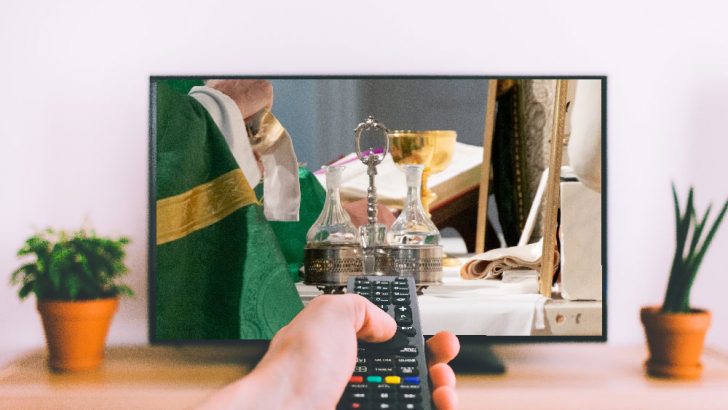Notebook
Today I completed my 13th Facebook Mass (11 Sundays, Holy Thursday and St Patrick’s Day). As has often been said, it’s a whole new world, and it’s not all bad either. Online Masses show how amazingly adaptable we Catholics can be.
Facebook supplies an amazing array of statistics. For each Mass celebrated live and then posted, Facebook tells me how many people have been reached and how many have viewed the Mass. It cannot tell me how many have actually prayed the whole Mass. Its statistics only refer to the number with Facebook profiles who interact: in many houses, a whole family will sit down to pray, but usually using only one Facebook profile.
And there are some who access the Mass through an external browser or via Google, leaving no trace of their engagement behind.
Statistics
Taking all the statistics available and arriving at an educated guess, I would think that between 1,000 and 1,200 people view the Mass in my kitchen each weekend, either viewing it live or watching the post at a time of day that suits them better. The total number of viewers is up to three times the number that used to attend the three Masses said in the parish each weekend, up to March 8. You can see why I will be in no rush back to church services.
Facebook gives another interesting insight also: it reveals the parts of the Mass where engagement is at the most intense. You might think Catholics would gravitate toward the second half of the Mass, but no: often the Liturgy of the Eucharist attracts the lowest figures. The readings seem to engage people better, the Gospel, even the homily and bidding prayers.
There are two things missing from the Facebook Mass: one spiritual, one temporal”
I suppose it is where that the Mysteries of Faith interact with lived reality. Notices and introductory words engage also, as does all music played. It is revealing but also educational. We have always taught that there are many forms of the presence of Christ, in the Eucharist, of course, but also in the Word. Facebook reveals a drift to the latter that is new and challenging.
Foraging these statistics involves an excrutiating task for the presider: watching oneself say Mass. This is not for the faint-hearted: all those words stumbled over, the stutters, silent gaps the fumbling with pages…those who attended my Masses were well used to it, but to have it shown to me like this is eye-opening.
There are, of course, two things missing from the Facebook Mass: one spiritual, one temporal. Holy Communion is dreadfully missed, of course — but so is the collection. I have noticed that while parish pastoral groups went underground early on, the Finance Committee has never disappeared. A ‘conference-call’ meeting was organised and means of bringing in the money devised. Even the priest was considered, with members acknowledging that the lack of the Easter collection was a big blow. I don’t think they will let me starve: but watch this space…
People power!
Last Sunday, May 24, was World Communications Day, a most relevant celebration for these pandemic days. Never have parish communication ministries had more relevance. Indeed, the parish without newsletter, website, webcam and/or Facebook page is at a severe loss, its relevance ebbing away.
Some parishes provide no Sunday Mass online, while the priest celebrates on his own in his presbytery. In parishes like that, where the parish leadership is unable to provide for the people, surely it is up to parishioners to make it happen. Parishioners should not be deprived of viewing the Mass when they most need its inspiration.



